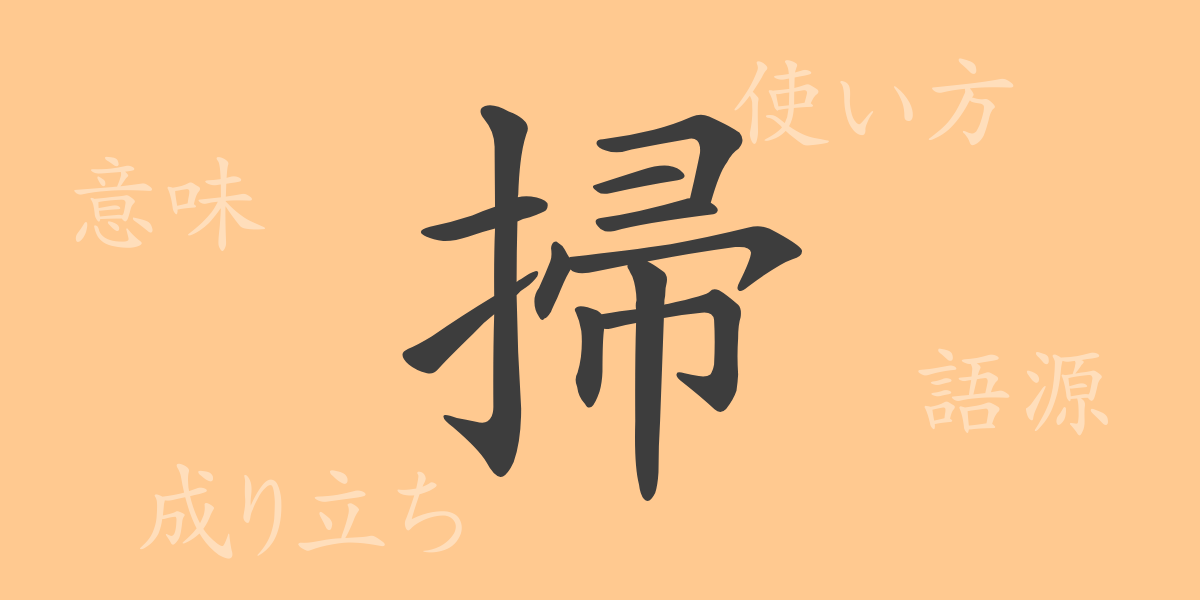Japan’s character culture has a profound history, and each character is imbued with its own origins and meanings. “掃” (はく – ソウ), a common Kanji frequently used in daily life, is no exception. This article delves deep into the etymology, meaning, usage, and pronunciation of “掃” (はく – ソウ), as well as related phrases and proverbs, exploring its allure.
Origins of 掃 (はく – ソウ)
The Kanji “掃” (はく – ソウ) evolved from ancient Chinese pictographs that depicted the act of cleaning the floor or ground with a broom. Initially represented by the character “帚,” which combined “手” (hand) and “彐” (the shape of a broom handle), it has simplified over time to the more streamlined “掃” used today.
Meaning and Usage of 掃 (はく – ソウ)
“掃” (はく – ソウ) conveys meanings such as “to sweep away,” “to clean,” and “to clear thoroughly.” In Japanese, it appears in many terms related to cleaning, like “掃除” (そうじ – cleaning), emphasizing notions of cleanliness and tidiness.
Pronunciation, Stroke Count, and Radical of 掃 (はく – ソウ)
The Kanji “掃” (はく – ソウ) is a fundamental character in Japanese, and understanding its pronunciation and structure is crucial for learning Kanji.
- Readings: On’yomi “ソウ” (ソウ), Kun’yomi “はく” (はく)
- Stroke Count: A total of 11 strokes
- Radical: Hand (扌)
Phrases and Proverbs Using 掃 (はく – ソウ)
Many phrases, idioms, and proverbs including “掃” (はく – ソウ) enrich the Japanese language, used in everyday conversation, literature, and business contexts alike.
- “掃除” (そうじ – cleaning): The act of cleaning a space.
- “大掃除” (おおそうじ – major cleaning): Thorough cleaning typically done at the end of the year.
- “一掃する” (いっそうする – to sweep away): To completely eliminate.
- “掃き清める” (はききよめる – to sweep clean): To clean thoroughly.
Summary on 掃 (はく – ソウ)
The Kanji “掃” (はく – ソウ) represents actions and concepts deeply intertwined with our lives, extending across multiple facets, from cleanliness to orderliness. This article aims to enhance understanding of the historical and semantic depths of “掃” (はく – ソウ), thereby enriching your appreciation of the Japanese language.

























